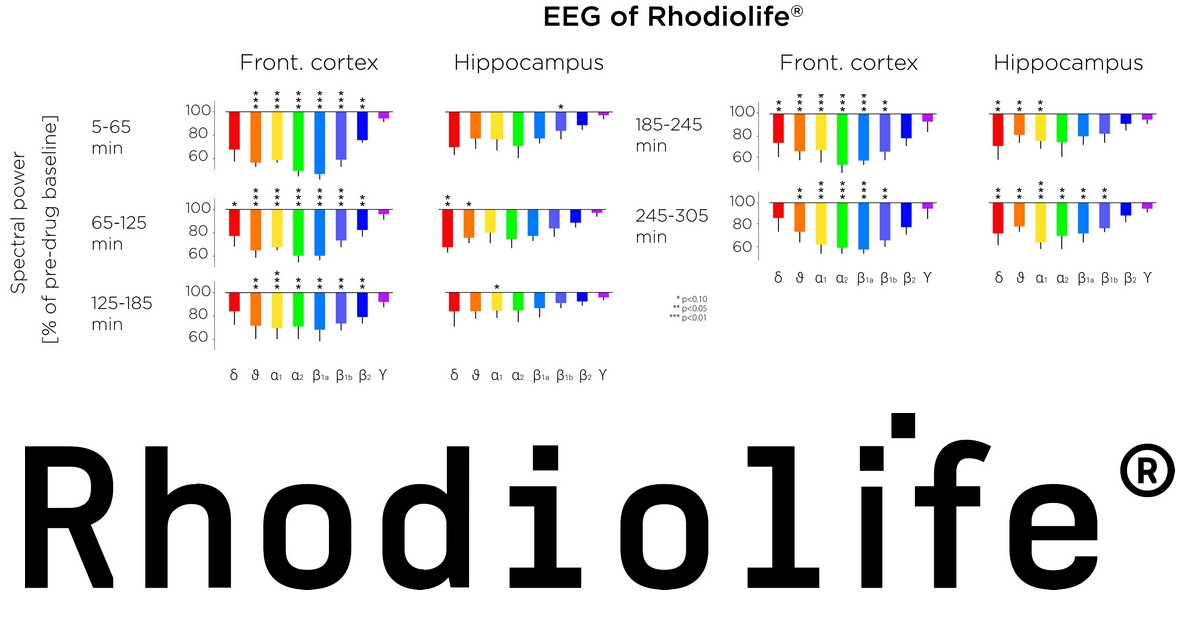Rhodiola stimulates the central nervous system

A new study with Rhodiolife from Nektium
A new study with Rhodiolife from Nektium (ex-PoliNat) "Neuropharmacological Characterization of Extracts from Rhodiola rosea, (...) in Comparison to Caffeine". The models projected Rhodiola near the position of Ginkgo extract, with attenuation of alpha2 and beta1 waves similar to caffeine without the known side effects. In addition, Rhodiola extracts attenuated delta and theta power, probably related to interference with the cholinergic and norepinephrinergic transmission, respectively.
To find possible therapeutic applications involving the Central Nervous System (CNS) for herbals is a major challenge during functional food and drug discovery and development programmes. Despite the availability of numerous in vitro and in vivo tests, there is no single agreed screening procedure for pharmacological testing of herbal extracts with anticipated CNS activity. Experience gained from more than 25 years of testing has shown that two models give reasonably reliable orientation for future CNS applications: construction of an electropharmacogram based on wireless recording of field potentials from the depth of the brain of freely moving rats (Tele-Stereo-EEG) and recording of the population spike produced by pyramidal cells from hippocampal slices in vitro. A combination of these two methods has now been used to characterize the pharmacological profile of extracts from Rhodiola rosea root, Oenothera paradoxa seeds and Paullinia cupana seeds. Spectral analysis of field potentials revealed attenuation of alpha2 and beta1 waves was common for all extracts. According to previous studies, this is interpreted as activation of the dopaminergic and glutamatergic transmission. In addition, Oenothera and Rhodiola extracts attenuated delta and theta power, probably related to interference with the cholinergic and norepinephrinergic transmission, respectively. Using discriminant analysis for comparison with reference pharmaceutical and botanical drugs, Rhodiola projected near the position of Ginkgo extract, whereas Oenothera extract was projected near the position of Tramadol, an analgesic drug. Physical motion was increased only in the presence of Paullinia extract and caffeine. Increases of long-term potentiation were observed in the presence of Rhodiola extract, Paullinia extract and caffeine. The combined information predicts stimulant and cognitive function-enhancing activities in humans for the Rhodiola extract, which could also be used as a possible caffeine-replacement, and antidepressant and analgesic activity for the Oenothera extract.
See the study : https://www.scirp.org/journal/PaperInformation.aspx?PaperID=69275